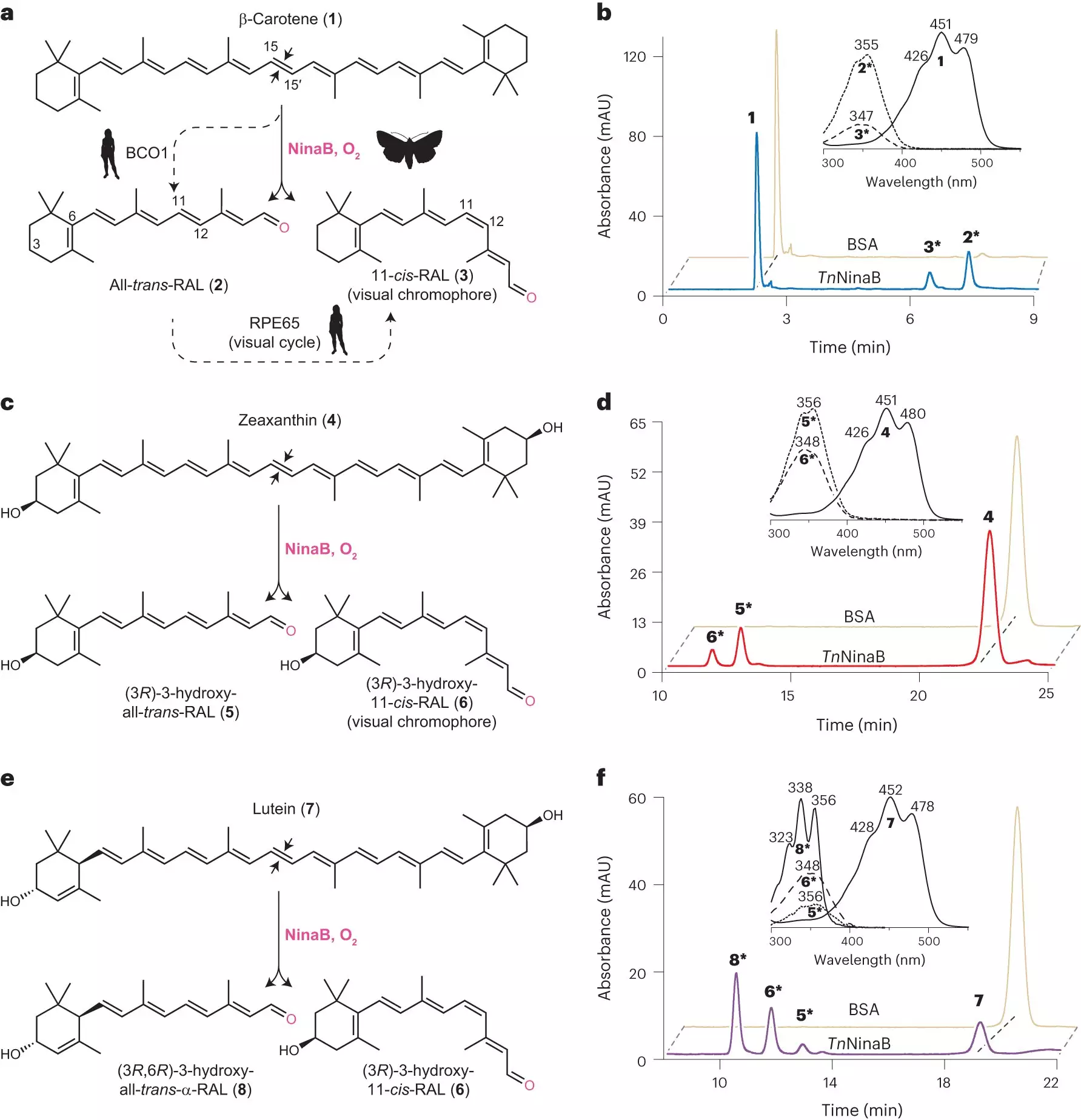The University of California, Irvine conducted a study that delved into the production of the critical light-absorbing molecule of the retina, 11-cis-retinal, also known as the “visual chromophore.” The research revealed not only similarities but also intriguing differences between humans and insects in this process. This molecule is essential for vision, and mutations in the RPE65 enzyme, responsible for its synthesis, can lead to retinal diseases such as Leber congenital amaurosis.
Traditionally, humans have been thought to require two specific enzymes to produce 11-cis-retinal from compounds like beta-carotene, found in foods such as carrots and pumpkins. On the other hand, insects can achieve this conversion with just one enzyme called NinaB. The researchers used X-ray crystallography to study NinaB in insects, which functions similarly to the RPE65 protein in humans. To their surprise, they discovered that while these enzymes share an evolutionary origin and a similar three-dimensional architecture, the process by which they produce 11-cis-retinal is distinct.
NinaB plays a critical role in the synthesis of 11-cis-retinal in insects. The study aimed to understand how NinaB can perform both essential steps in a single reaction, unlike the two-step process required by humans. By investigating the structural similarities and differences between NinaB and RPE65, the researchers gained valuable insights into the catalytic machinery necessary for the production of retinal visual pigments. This knowledge is crucial for addressing mutations in the RPE65 enzyme that result in visual impairments.
Lead author Yasmeen Solano, a graduate student involved in the study, highlighted that while structurally similar, NinaB and RPE65 operate in distinct locations during the production of 11-cis-retinal. The team’s research on NinaB also provided a deeper understanding of the structure of RPE65, particularly in a previously unresolved portion. This breakthrough discovery sheds light on the functional relationships between these enzymes and offers new avenues for addressing genetic mutations that cause vision-related disorders.
The study involved a multidisciplinary team, including researchers, graduate students, and undergraduate students from the field of biological sciences. Their collaborative efforts led to groundbreaking insights into the evolution of vision in humans and insects. The research not only challenges conventional assumptions but also paves the way for future studies on the synthesis of critical molecules for vision.


Leave a Reply